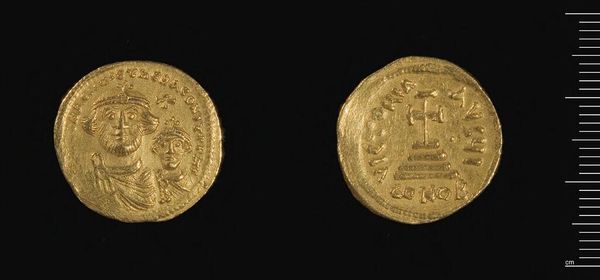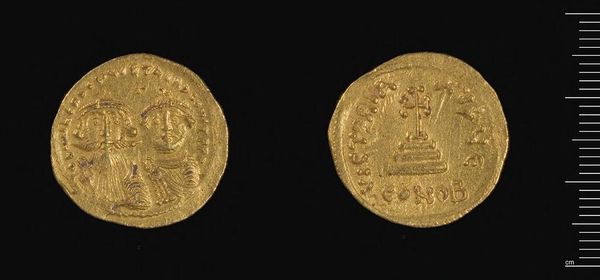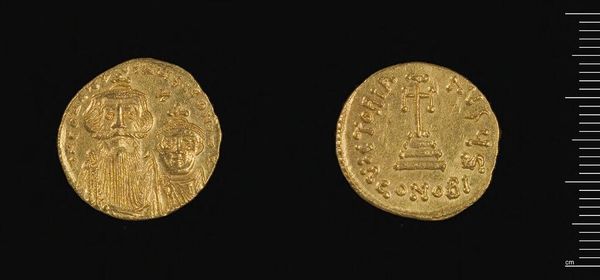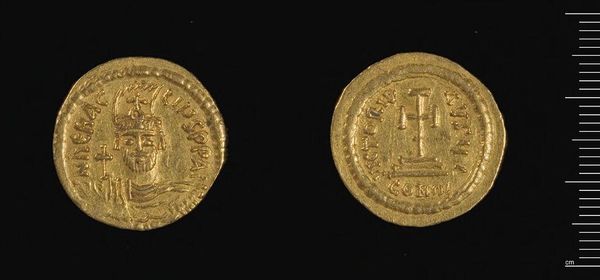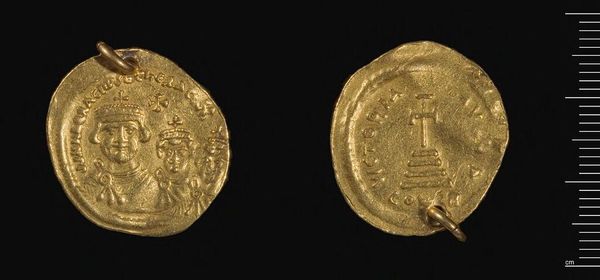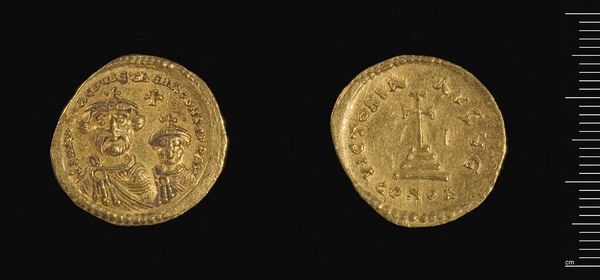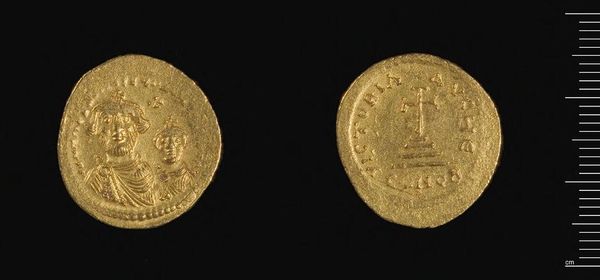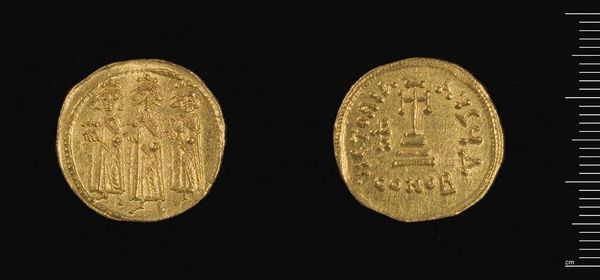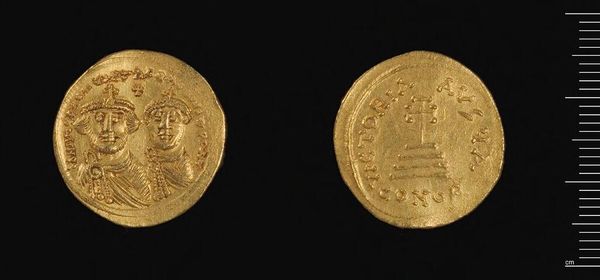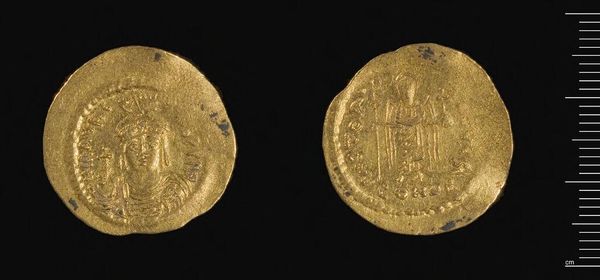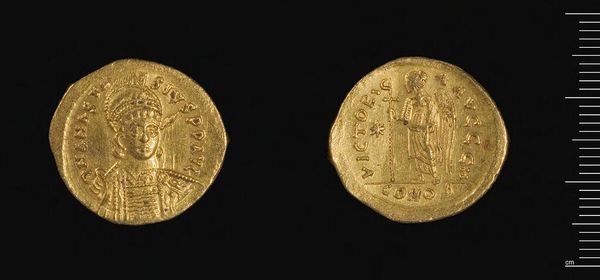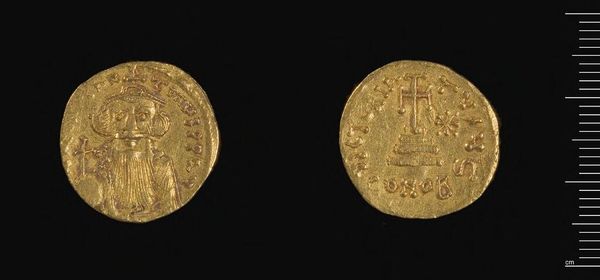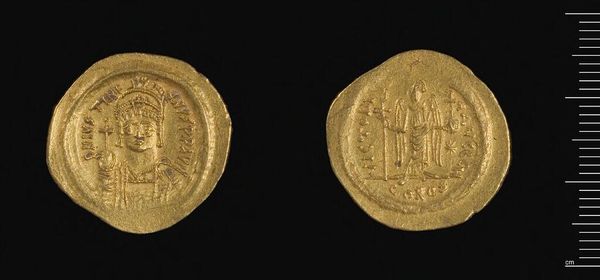
Dimensions: 4.46 g
Copyright: CC0 1.0
Curator: Look at this gold coin, "Coin of Herakleios," minted during the Umayyad Caliphate. It's now part of the Harvard Art Museums' collection. Editor: It’s striking! The imagery feels so direct and imposing, even on such a tiny scale. What powerful symbolism is at play here? Curator: The coin features Emperor Herakleios and his son, a clear continuation of Byzantine imperial imagery, yet produced under Islamic rule. Editor: The figures, crowned and formal, project authority. The cross on the reverse—it feels like a statement. Is it intended to project power or faith? Curator: Precisely. The Umayyads were initially hesitant to completely abandon existing visual languages, using imagery to assert dominance while slowly introducing Islamic elements. Editor: So it's a fascinating blend of continuity and change, a visual negotiation of power. The cross, for instance, might hold different meanings depending on who is looking at it. Curator: Exactly, it is a physical representation of the cultural and political complexities of that era. Editor: It makes you wonder about the hands this coin passed through and what it meant to them. A potent little object!
Comments
No comments
Be the first to comment and join the conversation on the ultimate creative platform.
